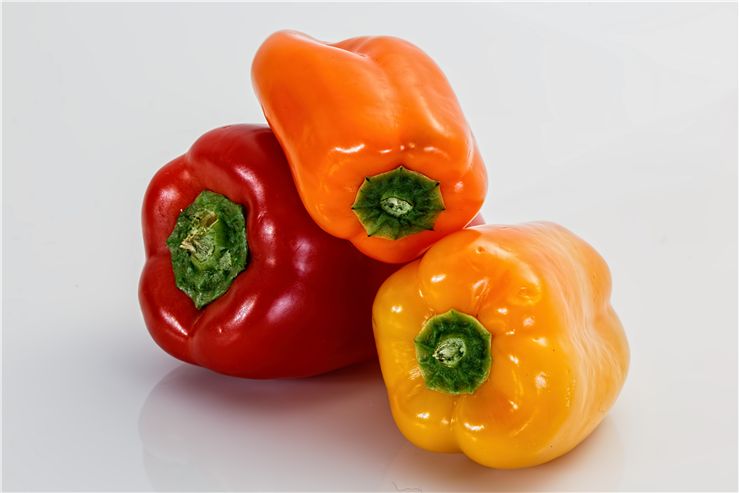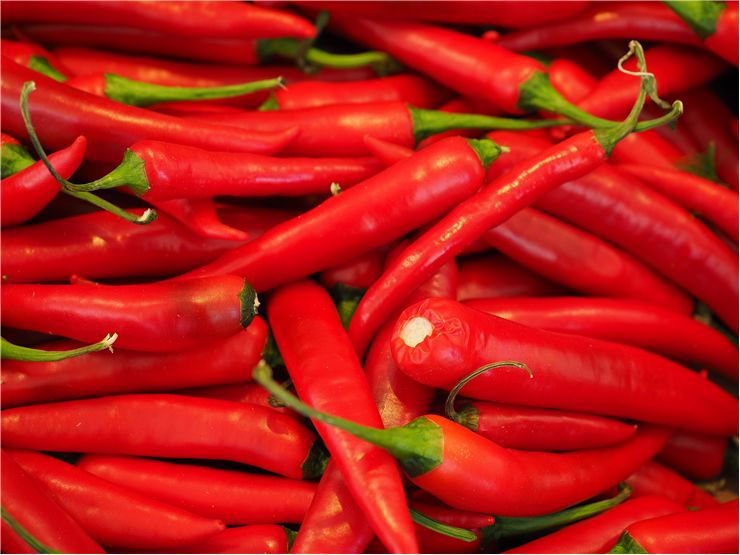Capsicum - History of Peppers
Capsicum is the name of the genus of the flowering plants and their fruit that we know and eat as “bell peppers” or just “peppers”. Their name comes from the Greek word “kapto” which means “to bite” or “to swallow”. There are different types of peppers, and we used them as food vegetables, spices, and in medicine. Depending on the place where they are grown and on the type they have different names. Variants of capsicum that are “spicy” commonly called chili peppers, or simply “chilies” while those mild or sweet are called red pepper, green pepper, bell pepper, or even just capsicum (in New Zealand, Australia, and India).
Although capsicum has no connection with the black pepper, (Piper nigrum), name pepper for capsicum come from the similarity in taste between the two plants. Chilli -now known as “chile”, on the other hand, originates from the Nahuatl (the language spoken by Aztecs) word “chilli” or “xilli”, which was a name of the older variant of capsicum which was grown by Aztecs some 5000 years ago.

The most variants of capsicum have capsaicin which is a lipophilic chemical (a chemical compound which can dissolve in lipids, meaning fats and oils) that produces a sensation of burning in any tissue with which it comes into contact and is irritant to mammals (birds don't react to it). Its purpose, within a plant, is to keep the plant from mammals and insects but to allow beards to eat the plants and spread the seed. Different variants of capsicum have different amounts of capsaicin. Bell pepper, for instance, has none of it while chilli peppers have higher amounts.
Place of origin of capsicum is Western hemisphere, and it was known and used there as food since 7500 BC. They appeared for the first time in South America, but they spread to Central America between 5200 and 3400 BC. Even today, the wild ancestral chiles are harvested and held in same regard as the domesticated variants. As for spreading of capsicum around the world, one story says that Columbus himself is responsible for that and that he introducing chile to Europe from where it spread further to Africa and Asia. He was also responsible for the name “red pepper” because of the similar taste of the fruit to the black pepper. When the pepper arrived in Europe, it quickly found the place in the cuisines of different peoples. Other story says that capsicum was brought to Europe by conquistadors and later spread to Asia and Africa by Portugal sailors and merchants. One of the reasons why the pepper came to Europe so quickly is because it was a good replacement for black pepper which was very expensive at that time and even used in some places as a currency. Hot spices were very valued because they were used to make monotonous diets more bearable (which probably says a lot about the food of that time).
Today, many countries use peppers (hot or not) in their cuisines. Spanish make chorizo, a type of pork sausage whichis called picante if it is made with hot chile, or dulce if it is made with sweet pepper. Hungarian lecsó is a thick stew made with hot and sweet peppers, tomato, onion, garlic and lard. It is popular in Hungary (of course), Germany, Czech Republic, Slovakia, Croatia, Poland, and Russia. In Bulgaria, South Serbia, and Macedonia people prepare peppers in different ways: as salad; pickled in turshiya; fried and covered with tomato paste, onions, garlic, and parsley; and even stuffed with minced meat, rice, beans, cottage cheese and eggs and then cooked. Red, spicy pepper can even be dried and crushed to be used in many other cuisines.


